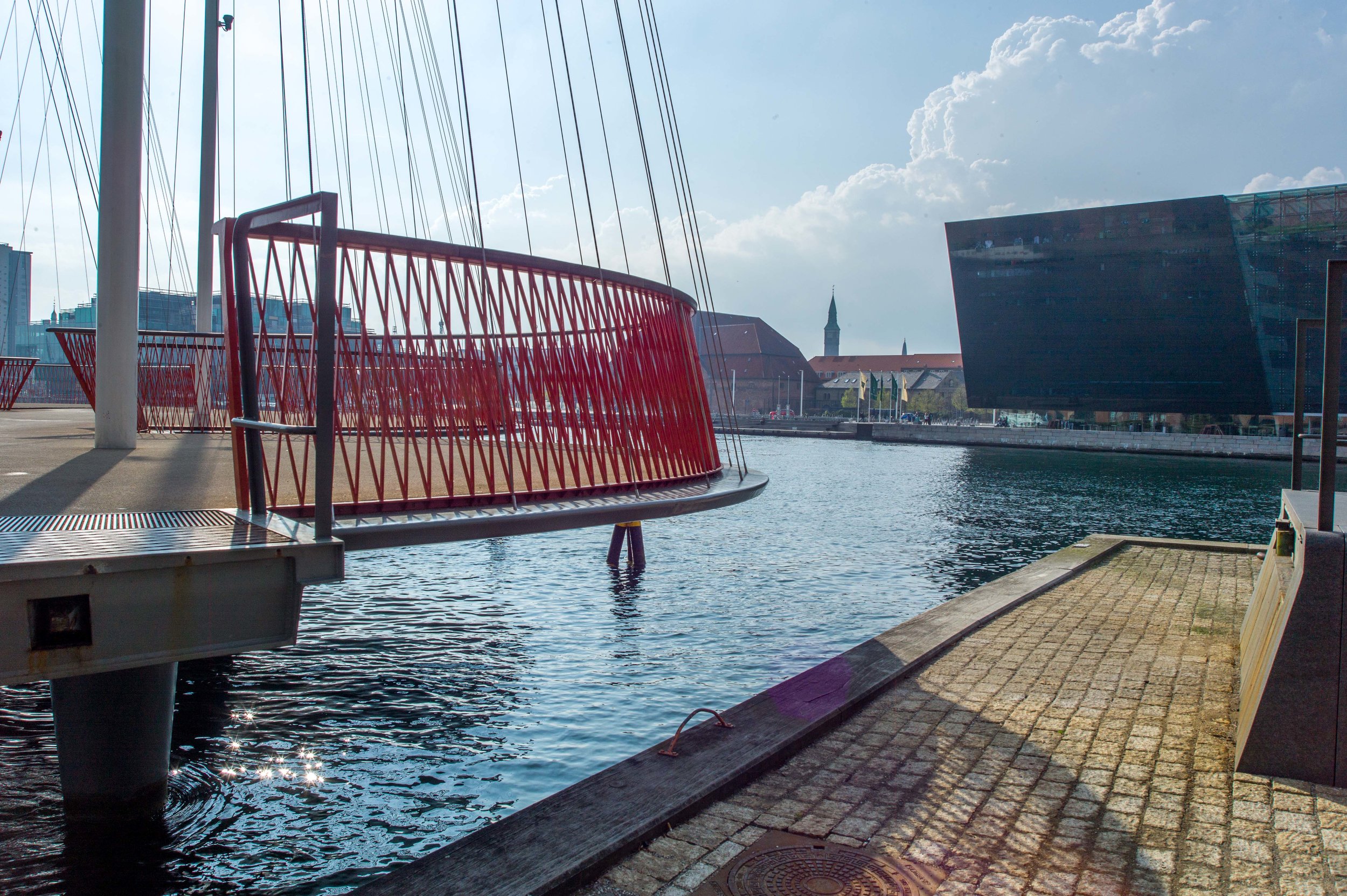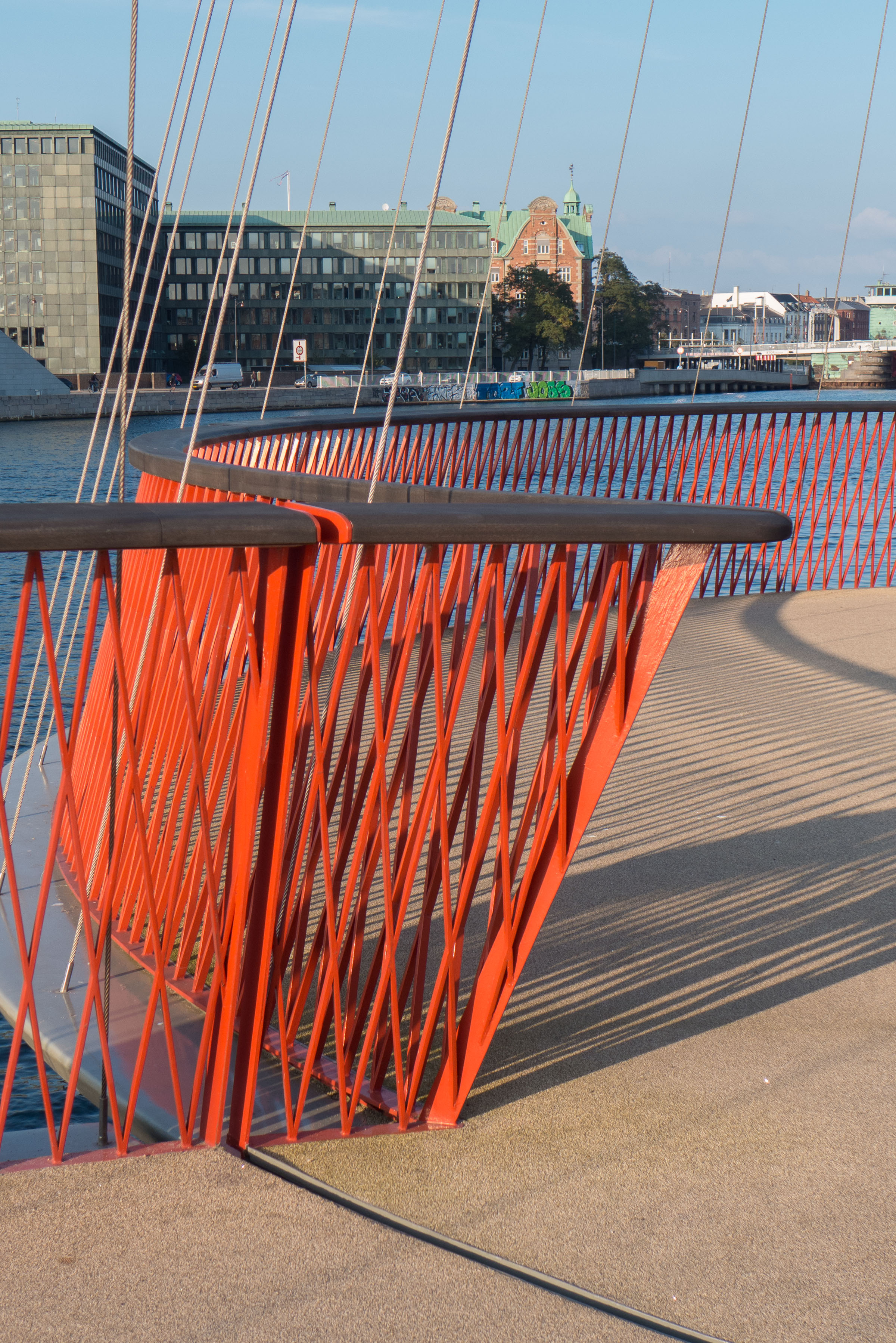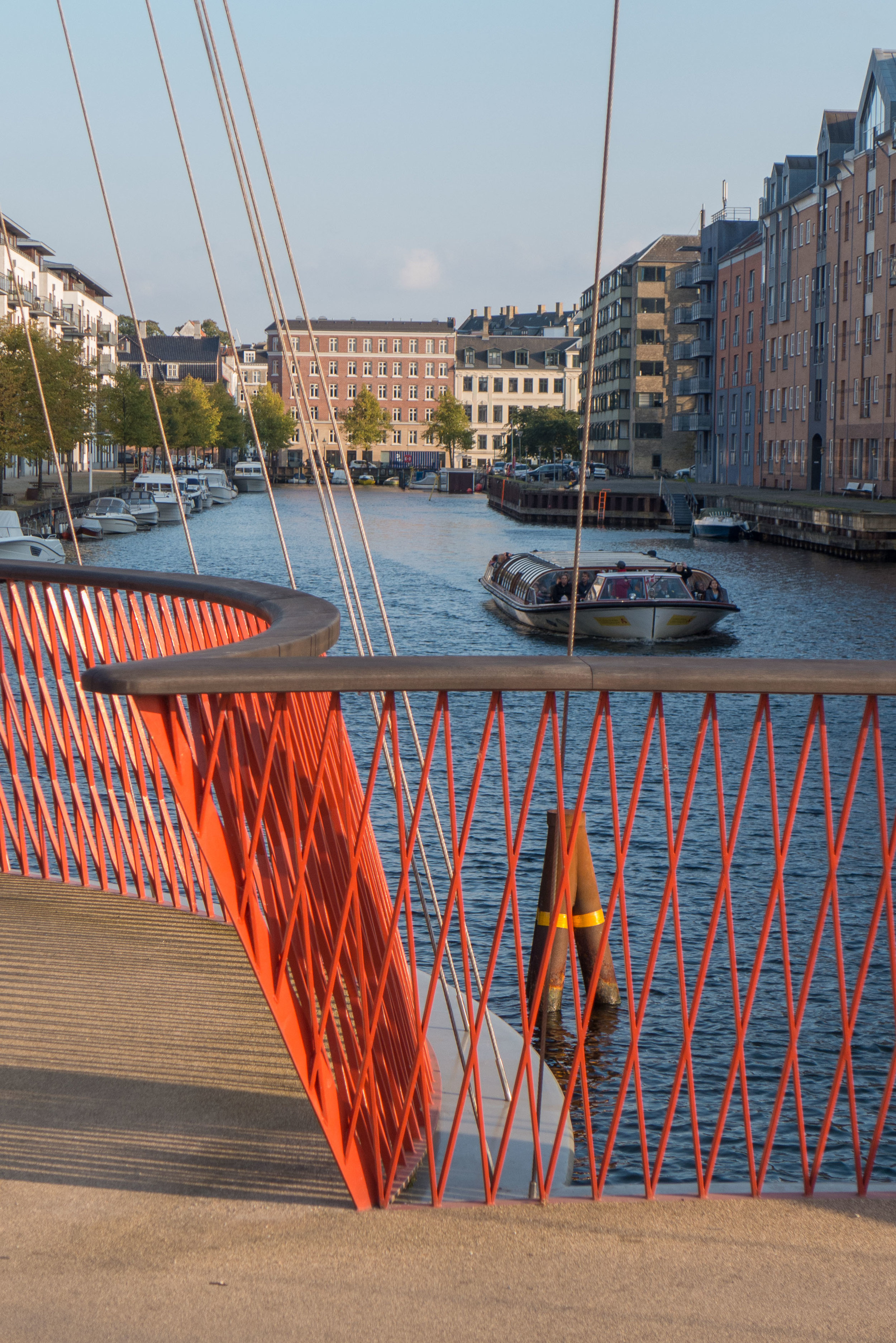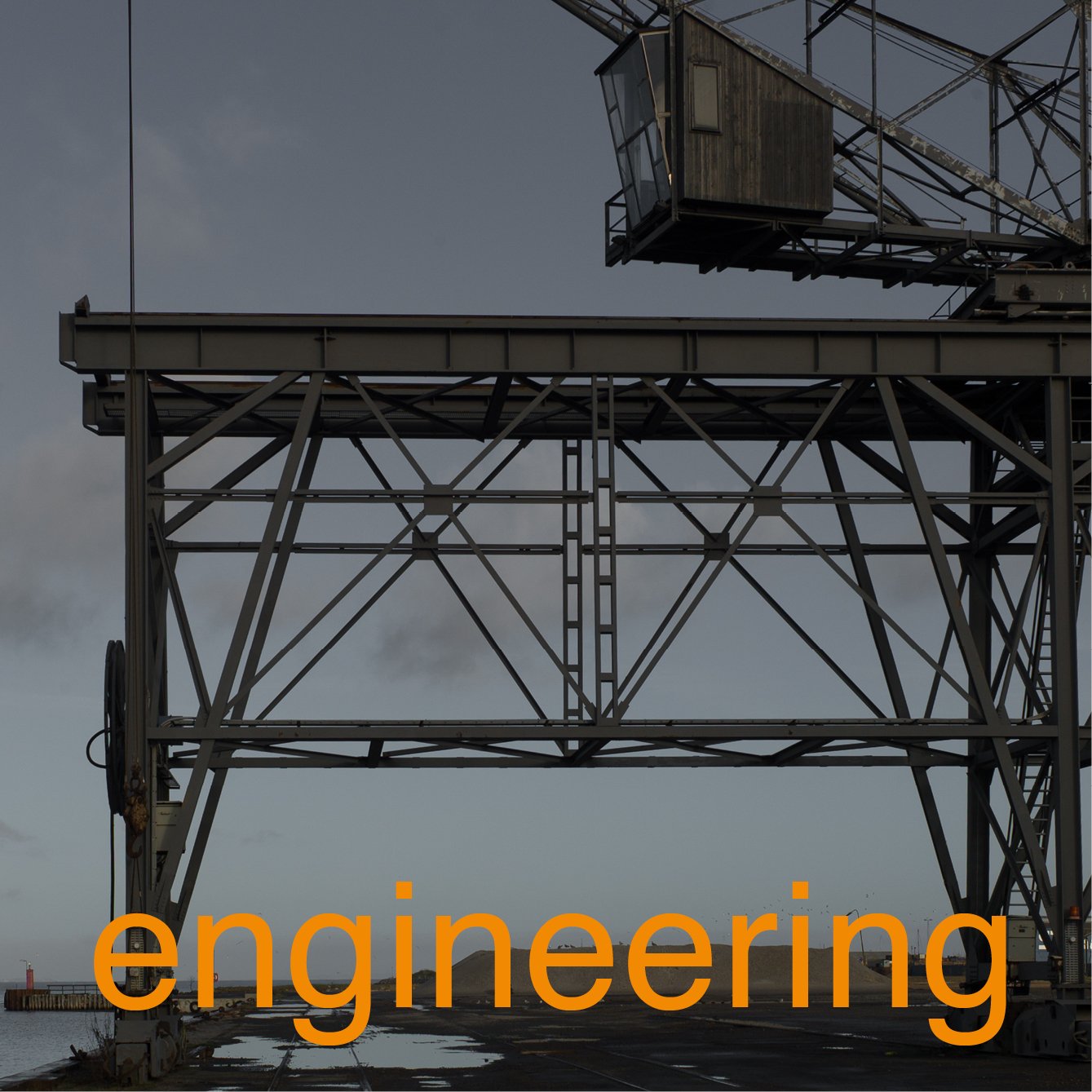.... or all in the engineering ....
/the bridge open for a boat to move out from the canal and into the harbour beyond
To be mundane, I suppose Cirkelbroen is simply a bridge over a canal, where there had been no bridge before, but it means that, for the first time, people on bicycles or walking can get along the waterfront of the harbour between Knippelsbro - the historic bridge at the centre of the harbour that links the historic centre and Christianshavn - and Langebro - the main traffic bridge between the city centre and Amager. All that was needed was a simple steel bridge that could either be raised or swung open to let boats from the canal sail out into the harbour.
Of course the bridge designed by Olafur Elliasson is so much more than it … but even so … in the end … it all has to work and it has to be robust and it has to be relatively quick to move and and easy to operate. So that it is the engineering part of the design that allowed the concept to be realised.
Rambøll - the engineering company - were responsible for the construction of the bridge, and there are a number of interviews on line and a video on YouTube that shows the parts of the bridge deck arriving by barge and being lifted into place by a giant crane on another barge. There you can not only get a real sense of the size and weight of the parts but also get some sense, as it is lowered in to place, how it works.
the bridge closing and, on the right, almost closed as cyclists wait to cross
You can see that although the bridge appears to pivot around the largest mast at the centre of the bridge, when it is opened, there is, in fact, a substantial substructure below the water that swings back and that carries the outer two circles at the Knippelsbro end of the deck in and away to create an opening for taller boats to pass.
The quay here is just 1.6 metres or so above the water and although a bridge deck at the level of the quay would have been simpler, and less intrusive visually, it would have given no head room for vessels to pass under the bridge without it being raised or swung open. By taking the deck up - just 1.1 metres above the quay - most tour boats and smaller pleasure boats and canoes can pass under the bridge with the deck in place.
But the consequence is that there have to be long ramps up to the deck and because the ramps extend well beyond the quays on either side of the canal then there are also steps up onto the deck from the quay of the canal.
The length and the gradient of the ramp has to be a compromise: short but steep and the ramps would have been difficult for cyclists - particularly if they are riding family bikes, the famous Christiania bike, which can be heavily loaded or they are riding bikes with fixed gears - but too shallow a slope would make the ramp too long. In fact, the ramps seem just slightly too short and steep because cyclists seem to be pushing hard to get the top but then on reaching the deck it is not easy and certainly not an intuitive change to quickly reduce the effort on the pedals so bikes tend to come across the bridge just slightly too fast and, curiously, the curves on the route across either mean people cut the corners slightly - making their route less predictable for other users - or some faster cyclists even do that thing of leaning into the curves as they snake across and actually gain momentum … or at least appear to.
The other problem, of course, is that with tourists they are distracted - looking at the bridge or absorbed by watching what is happening on the harbour or they are looking at the back of a camera or holding up a phone for a selfie rather than watching out for the bikes coming through - so it is also a good place to pick up a smattering of Danish and foreign swear words.
That’s not to suggest that the concept or the final design is wrong … just that, with any concept, the most difficult part is anticipating how human beings will behave.
















